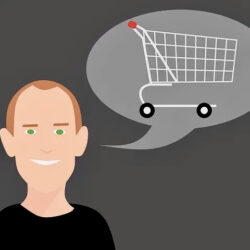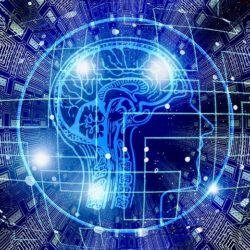Demand planners do not need to fear for their jobs

Thanks to artificial intelligence, many demand planning tasks can be automated – including forecast adjustments. But this does not mean that demand planners need to fear for their jobs, according to analytics experts from SAS during the SCM webinar on cognitive automation held on 24 March: “On the contrary, we want to enrich their roles.”
By Marcel te Lindert
During the second wave of the COVID-19 pandemic, a Quebec-based brewer suddenly saw a sharp rise in the demand for certain types of beer. The reason: countless local women had started sharing their beer preferences on social media. “If we hadn’t included external sources such as social media in our models, we wouldn’t have been able to explain this unexpected increase. But in this case, the brewer was able to react proactively and replenish stocks in stores as quickly as possible,” said Patrick Dittli who is responsible for business development within the consumer products and retail division at SAS.
According to the analytics software specialist, the pandemic has shown that internal data alone is not enough to create a reliable demand plan; external data is needed too, starting of course with infection rates. “But you also need to think of economic indicators. The economy is recovering faster in some countries than in others,” explained Dittli. “Another factor is data on market developments and competitors’ activities. These are all signals that tell us something about how demand will develop. We need them in order to actively steer service levels.”
Ensemble model
Today’s technology makes it easy to integrate such data automatically, regardless of the source or the file format in which it is made available. “That’s the advantage of cognitive automation: automating tasks that people used to have to do,” continued Dittli. He cited the example of a food retailer who saw its forecasting reliability improve by as much as 12% thanks to the use of external data. “The external data made a real difference, along with the application of cognitive automation and machine learning. The forecast reliability is now at more than 90%.”
SAS used a combination of different models – or, as Dittli called it, an ‘ensemble model’ – for that food retailer. “An ensemble model takes different approaches into account and combines them in an intelligent way. This not only leads to a better forecast, but also to optimization of the entire supply chain. That model is no longer a black box… on the contrary. We need to open up the black box so that demand planners can see which knobs they can turn to fine-tune the model,” he stated.
Are planners becoming obsolete?
SAS is using cognitive automation to simplify and improve the work of demand planners. “The question is: what can the computer learn from us, for example when it comes to adjusting forecasts? We tend to spend almost all our time adjusting forecasts, perhaps because they’re based on outdated data or because we have certain knowledge that hasn’t been incorporated. But what’s the effect of those adjustments?” asked Dan Mitchell, Director Global Retail & CPG Practice at SAS. The SAS software detects when a demand planner adjusts the forecast, and whether the adjustment actually made the forecast better. “We want to learn from that. Perhaps we should add more data or take more account of certain processes elsewhere in the organization. We can subsequently automate that too.”
Mitchell admitted that cognitive automation scares many demand planners because they think that their jobs will become obsolete as more and more tasks are automated. “In fact, the opposite is true. Right now, demand planners spend a lot of time on things like processing data and making the same adjustments over and over again. That leaves only a small amount of time for tasks that require more brainpower and add more value. Cognitive automation frees up more time for that, so they can pay more attention to parts of the supply chain where good data and models are currently lacking.”
A score for every planner
So cognitive automation is not about replacing planners, but about supporting them and enriching their jobs instead. “Manually forecast adjustments are sometimes necessary, such as when companies enter new markets or introduce products. But we can’t expect planners to spot everything. That’s why we want to support them,” said Mitchell. He demonstrated how the SAS software calculates a score for each planner, the ‘forecast value add’, which indicates the extent to which the planner’s interventions actually contribute to a better forecast. “The aim of this isn’t to put the planners in competition with one another; the scores can’t be compared directly. After all, the planner with the lowest score may have a very difficult product category which makes it harder to achieve success with interventions. So why do we calculate the forecast value add? To learn from it and to stimulate discussion between planners.”
The SAS software goes a step beyond just calculating the score. Every time a planner adjusts the forecast, machine learning is used to see the effect of the intervention. Mitchell: “Then if the planner encounters a similar situation again, we use that insight to advise him on how to adjust the forecast – and sometimes we advise him not to modify the forecast at all. This leads to a more reliable forecast, and also to fewer adjustments. After all, we tell the planners when and when not to intervene, and that saves time which they can spend on more important matters instead.”










